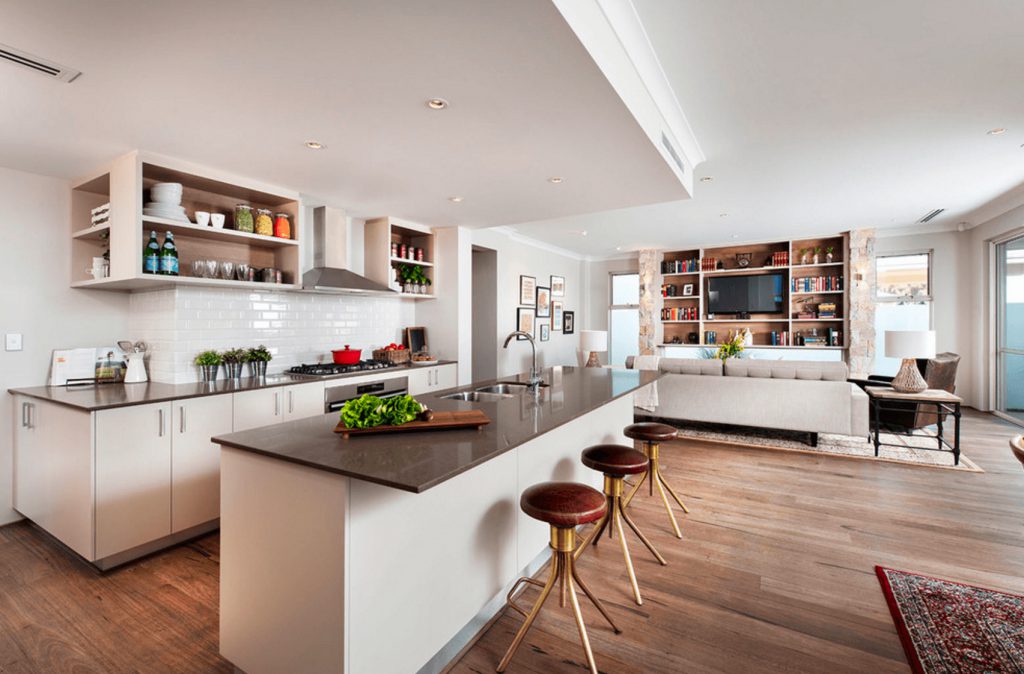How to Make an Open Floor Plan Work for You
 a trend, open floor plans have become a staple of most modern homes. An open floor plan generally means the living room, kitchen, and dining room are combined into a large space or great room. Before taking a hammer to all interior walls, it’s important to know the structure of your home, as well as the benefits and ways you can accomplish an open concept.
a trend, open floor plans have become a staple of most modern homes. An open floor plan generally means the living room, kitchen, and dining room are combined into a large space or great room. Before taking a hammer to all interior walls, it’s important to know the structure of your home, as well as the benefits and ways you can accomplish an open concept.
Benefits of an Open Floor Plan
Space
Small, cluttered homes can be transformed into airy, more breathable spaces by knocking down a few dividing walls. A demolition project may seem daunting, but the average cost is just over $3,000. Just be sure to have a professional take a look before wielding a sledgehammer. Hiring a structural engineer will cost you about $500, but you’ll save yourself the headache of rebuilds, fines, or structural problems.
Natural Light
Without walls blocking the windows, natural light is able to stream in your home, making the open space seem even larger and more airy. Along with knocking down walls, you can bring natural light into your home by connecting the outdoors to your home’s interior with large patio doors. On average, you can install glass doors for about $1,600.
Inclusivity
It’s right there in the title: an open floor plan means more openness and inclusivity in your home. When you’re preparing dinner in the kitchen, for example, you won’t be closed off from the rest of the house. This is great for both entertaining and every day. When you’re entertaining, you can still be a part of the party, even while preparing food and drinks. And as an everyday solution, you’re able to keep an eye on children, pets, or—let’s be honest—the TV, while still going about your daily tasks.
By Monica Thomas

